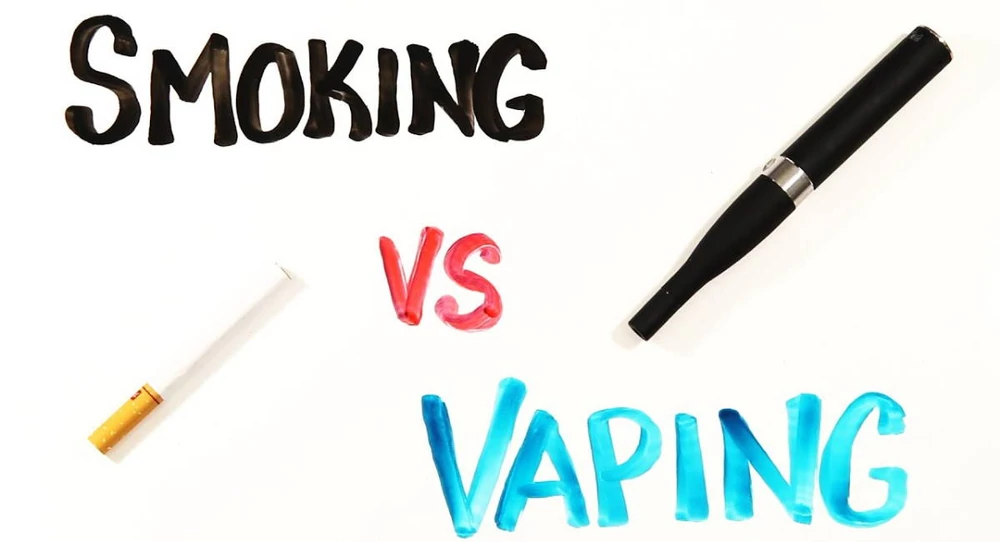
Vaping is Considered “Safer”

According to WHO’s survey in 2018, 41 million people worldwide were using e-cigarettes, and the figure is estimated to jump to 55 million this year. As the number of vapors grows over the years, so as a big concern about it: is vaping safe?
In fact, it’s hard to answer. You may find this question always comes with some uncertainties when googling answers from official medical institutions or health forums. Whether inhaling vaping substances to human bodies is safe in the long run remains to be a question, even for researchers. Based on the conclusions from researches so far, the vaping ingredients may affect human bodies in the following ways:
·Nicotine: No evidence shows it can cause cancer, but it is known to be addictive;
·Propylene Glycol: It is approved as safe for use in sweeteners and cosmetics products. However, the substance could create formaldehyde after being heated at a fairly high temperature;
·Vegetable Glycerin: It is also approved as safe for use in sweeteners and cosmetics products;
·Flavorings: They are safe to eat, but whether they are safe as well to breathe in after being heated is yet to be proven.
From the facts above, we can easily conclude that more studies on vaping are needed until the medical community can give a clear answer about its long term impacts. But if you ask “is vaping better than smoking?” I would say with no hesitation:
Yes, vaping is definitely a safer lifestyle.
Vaping vs Smoking
It is not news that how harmful smoking could be. First of all, combustible cigarettes contain 7000 chemicals or so, among which 250 are known to be harmful (about 69 can directly cause cancer), including the acetone well-known for the wide use in nail polish remover products, and arsenic specially for exerting toxicity in rat poisons. These chemicals combined can despair people’s health in a dramatic way. In comparison, the liquid in e-cigarettes is made from much simpler substances as above, which prove to be far less harmful.
In addition, the different basics between combustible cigarettes and e-cigarettes also account for why the latter is a safer lifestyle. Smokers are exposed to burned tobaccos, while vapors inhale aerosols from heated e-liquids. When tobaccos are burned, they release tar and monoxide carbon, the two biggest insidious killers for human being. However, the two toxic byproducts are not found in the vapor produced by e-cigarettes. It is for this reason that the Centers for Disease Control and Prevention (CDC) also agreed that "E-cigarettes have the potential to benefit adult smokers who are not pregnant if used as a complete substitute for regular cigarettes and other smoked tobacco products."

For more evidence of the relative safety of e-cigarettes, we can look at a research paper regarding e-cigarette vapor toxicity in 2014, in which the authors studied the content of various potentially toxic and carcinogenic compounds in 12 brands of e-cigarettes. The result demonstrates that e-cigarettes do come with some toxic chemicals; however, “the levels were 9-450 times lower than in tobacco smoke.”1 There is another interesting research pointing out that, once people switch from traditional smoking to vaping, their blood vessel function can improve within as short as one month, and the potential to suffer heart attacks and strokes will thus go down.
Vaping Plays a Big Role in Smoking Cessation

In England alone, smoking kills almost 75,000 people in 2019. As shown by the data from the National Cancer Institute (NCI), about one out of fifteen American smokers develop lung cancers. This frightening figures have not only drives governments and institutions to work out smoking cessation solutions, but stimulates individual smokers to take actions to stay away from premature death and disease.
Vaping has turned out to be one of the most effective ways to help people wean off cigarettes. It is estimated that in 2017, e-cigarettes helped roughly 50,000 smokers quit. Two reasons may explain why vaping is a strong quit aid as such. First, the way people use e-cigarettes is very similar to how they take a drag on combustible cigarettes. For another, most smokers are dependent on tobacco for nicotine, and the substance is also available in vaping products. Using e-cigarettes as a substitute for tobacco has so far benefited a great number of smokers, and it is expected to benefit more.
Conclusion
The vaping industry is booming. Its increasing popularity gives rise to a heated public debate over its safety. However, there’s no need to worry – as an alternative to smoking tobaccos, vaping can be far less harmful than the latter, as long as the products are regulated ones. In a word, vaping is a safer lifestyle than smoking. But of course, it is only recommended to adult smokers. For those who have never smoked before, e-cigarettes can by no means improve their health conditions. What’s more, children are also discouraged from vaping since the inhaling of nicotine can have negative impacts on their brains’ development.
